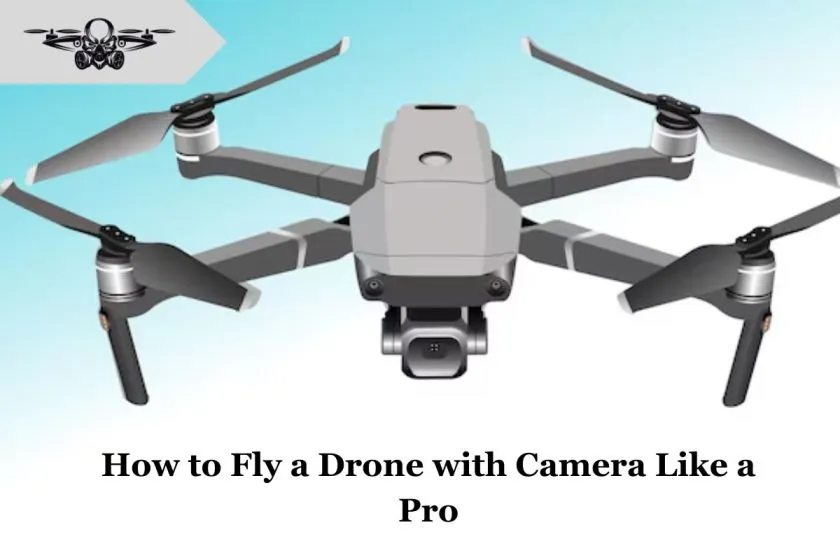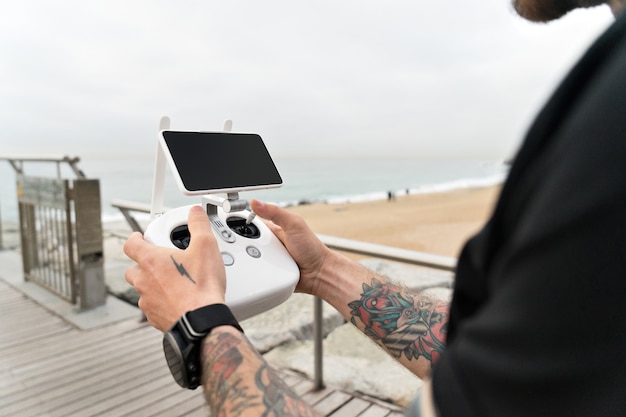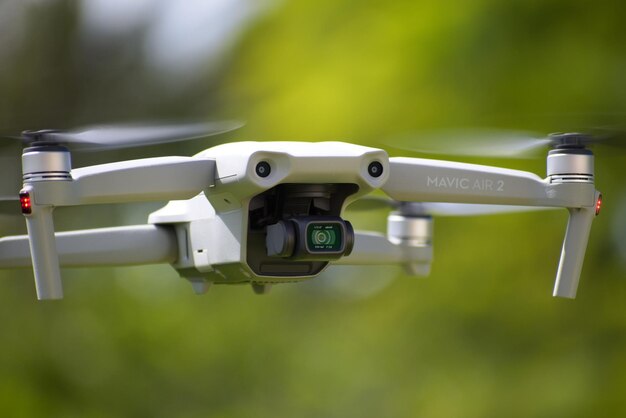
How to Fly a Drone with Camera Like a Pro?
How to Fly a Drone with Camera Like a Pro? Not possible to remove the adverb. Or perhaps you’re considering it, but you’re not beyond any doubt about where to begin? We created this to offer help to unused drone pilots in starting their journey to learn how to fly. This guide helps you fly a ramble, whether you have some skills or are just starting out. It offers clear directions to improve your abilities.
But flying a ramble isn’t fair with approximately knowing how to handle a farther control. It's about understanding how flight works. It also means exploring real systems safely and respecting safety and security standards.
And that’s why we broke this direct into two parts—Before You Fly and Flying. Recently, You Fly shared important tips for flying a drone with a camera. Meanwhile, Flying focuses on skills needed to learn flying. It helps beginners become skilled drone pilots.
How to Fly a Drone with Camera Like a Pro?

Drones have quickly evolved from specialty toys to useful tools.
They are now used in:
-
photography
-
filmmaking
-
agriculture
-
construction
-
search and rescue operations
A long-distance hike with a camera, especially a thermal one, is popular among experts. They need high-performance gear for their adventures. But flying a ramble like a professional requires more than fair great equipment—it requests a mix of information, hone, and the right mindset.
Read Also: What Is the Best Drone for Real Estate Photography for 2025?
This guide is for you, whether you're new to drones or an enthusiast looking to improve. It will teach you the key principles of flying a camera drone like a pro. We'll discuss flight basics, how to maintain your camera, advanced features, and tips. These will help you maximize your long-distance drone experience with a camera.
Before You Fly—Understanding Drone Regulations
Specialists and commercial drone pilots in the U.S. must know and follow FAA rules when flying. To fly your ramble lawfully and securely it’s significant that you know and take after the FAA’s rules. But there are two sets of rules—one for those flying for fun, and one for those flying for work. Are you flying for fun or for work?
In the U.S., there are two sets of rules for ramble operations:
-
Commercial ramble pilots flying for work must take after the FAA’s Portion 107 rules.
-
Recreational flyers who fly for fun need to follow USC 44809. This rule outlines the Special Case for Constrained Recreational Operations of Unmanned Plane.
Any ramble operation for work counts. For example, you might do an airborne shoot for a restaurant in exchange for $1,000 in restaurant credit. Or, you could shoot a high school football team because you know the coach follows the Part 107 rules.
You’re as it were considered a recreational ramble pilot if you’re flying entirely for fun.
Commercial Drone Pilot Regulations

Here’s how to fly rambles in the U.S. as a commercial drone pilot:
Follow the Portion 107 rules. Get to know the FAA’s Little UAS Run the Show (Part 107). It includes rules about working conditions, pilot certification requirements, and operational waivers.
Flying under Part 107 means keeping the drone in sight. You must fly below 400 feet and avoid flying over people. Learn more around Portion 107.
Related Article: Top 5 Best Drones Under $100 for Aerial Photography (Beginner Level)
Obtain a Inaccessible Pilot Certificate. Pass the FAA Part 107 test to earn your Inaccessible Pilot Certificate. This certificate is crucial for all commercial drone operations. Ramble Pilot Ground School is a test prep course that makes a difference ramble pilots get prepared for the test—learn more here.
Register your ramble. Enlist any ramble weighing more than 0.55 pounds with the FAA some time recently flying commercially. Enrollment can be completed online at the FAA Ramble Zone.
Label your ramble. Verify your ramble using its enrollment number for identification in case of events or inquiries.
Stay overhauled on changes. Regularly check for updates in FAA rules and local laws that affect drone operations to ensure compliance. Go to the FAA Newsroom for updates.
Local Laws and Security Concerns
Aside from government controls, ramble pilots must moreover be careful of protection concerns and nearby laws that might confine ramble utilization in certain zones. In spite of the fact that it’s lawful to fly over private property concurring to the FAA.
It’s vital to be careful when doing so, and to maintain a strategic distance from capturing film where people anticipate security without authorization. Moreover a few regions have particular statutes that assist control ramble utilize regularly relating to flight over populated ranges or touchy foundations.
Understanding Your Drone and Its Features
Before you indeed think around taking off, it’s basic to altogether get it your ramble demonstrate. Proficient rambles, particularly a long separate ramble with camera, offer complex highlights that require study.
Key highlights to see for:
- GPS Mode: Stabilizes the ramble for smoother shots.
- Return to Domestic (RTH): Consequently returns the ramble to its dispatch point.
- Obstacle Shirking Sensors: Vital for flying securely in thick areas.
- Camera Gimbal: Guarantees steady and smooth footage.
If you’re working with a long distance drone with camera, you’ll too require to familiarize yourself with warm imaging program and calibrations. These rambles are regularly utilized in mechanical reviews, natural life observing, and look operations.
Learn the Rules of the Sky
To be a professional, you must fly lawfully and morally. Most nations, counting the U.S., India, the UK, and EU countries, have strict ramble regulations.
Basic worldwide rules include:
- Fly underneath 400 feet
- Always keep the ramble in locate (unless you have BVLOS—Beyond Visual Line of Sight—permission)
- Don’t fly over individuals or moving vehicles
- Avoid confined zones and airports
- Register your ramble if required
Flying a long separate ramble with camera may require extra authorizations, as you seem breach controlled airspace. Additionally, working a ramble with warm camera for commercial or observation work might require information protection endorsements or certifications.
Get Comfortable with Your Camera Settings
Knowing how to fly a ramble is half the work. To really fly like a master, you require to oversee your camera well. Distinctive rambles have distinctive specs, but these are common camera highlights worth learning:
- ISO: Controls light sensitivity.
- Shutter Speed: Influences movement blur.
- Aperture: Controls profundity of field.
- White Adjust: Guarantees precise colors.
- Resolution and Outline Rate: Choose the quality of your video.
For professional-grade film shoot in manual mode. Utilize ND channels for sunny days and continuously survey your histogram for introduction balance.
If you are utilizing a drone with camera, familiarize yourself with color palettes like White Hot Dark Hot Iron bow or Rainbow which offer assistance recognize warm varieties. These palettes can highlight auxiliary shortcomings creatures, or indeed gatecrashers amid nighttime flights.
Learn Cinematic Development Techniques
Flying like a proficient long distance drone with camera. Once you’ve aced fundamental flight and camera settings, it’s time to work on development techniques.
Try these cinematic moves:
-
The Uncover: Begin moo behind an protest, at that point rise to uncover the subject.
-
Orbit: Circle around a subject easily at a steady speed.
-
Crane Shot: Rise straight up to appear context.
-
Push In/Out: Fly straight toward or absent from a subject, keeping it centered.
-
Tracking: Coordinate the speed and heading of a moving subject.
These moves stand out when you use a long, separate camera ramble. They are great for tracking wildlife, boats, or vehicles over large areas.
Maintain Line of Locate, Long Distance Drone with Camera
When flying a long remove ramble with camera, the allurement to go distant can supersede security instinctual. Continuously keep up visual line of locate unless you have uncommon permitting for BVLOS operations. Use the drone’s FPV (To begin with Individual See) camera to help your see, but do not depend on it alone.
Also, keep an eye on your drone’s telemetry:
-
Battery percentage
-
Distance from controller
-
Signal strength
-
Wind speed (in case available)
These measurements offer help you calculate whether it’s time to bring your ramble back.
Keep Overhauling Your Knowledge
Drones advance quickly. Firmware upgrades, modern directions, and cutting-edge tech develop each few months. Subscribe to gatherings, YouTube channels, and official blogs from DJI, Autel, or Skydio to remain current. In this article, want to know how to use long distance drone with camera?
New features in long camera walks can boost your workflow. Real-time 4K streaming helps you stay connected. Changes to prevent shirking also make a difference. Easy connections simplify the process even more. A drone with a camera might get updates that enhance efficiency or add AI analysis tools.
Conclusion
Flying a camera drone like a pro takes skill, creativity, responsibility, and practice. Whether you're using a long camera for cinematic shots or a smaller one for reviews and wildlife, the goal is the same: fly smart, safe, and with purpose.
Master manual controls, know your hardware, and use highlights wisely. This way, you can create high-quality films and tackle complex missions with confidence. Keep practicing, stay educated, and most importantly, enjoy the thrill of flying like a true pro.


